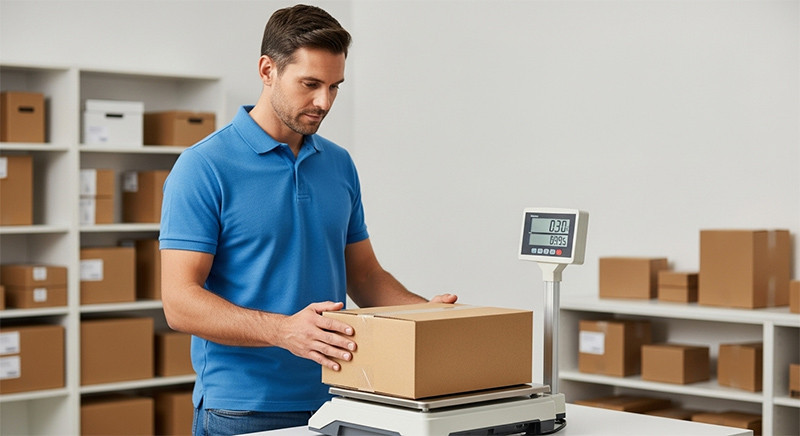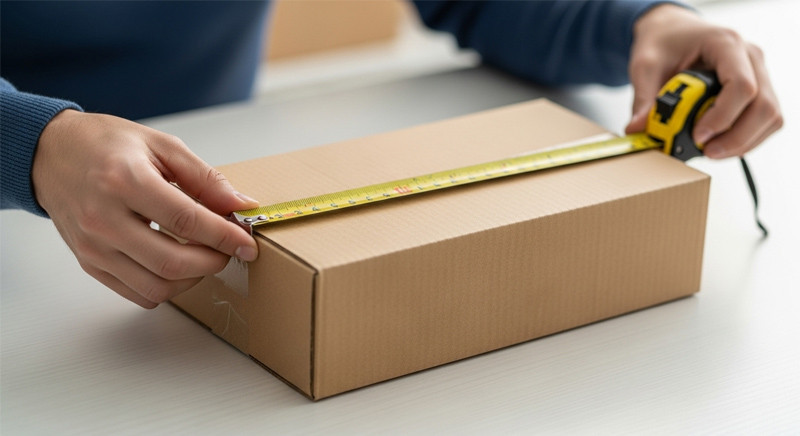How to Weigh and Measure Your Parcel At Home
There are many reasons why someone might need to measure and weigh a parcel at home. Perhaps you’re too far away from your nearest drop-off point or prefer to print a label at home.
In these cases, it’s essential to remember that couriers set clear limits and often charge by size rules. Some even warn that inaccurate figures can result in extra charges or returned items, so getting the figures right the first time should be a priority.
That’s why, today, we’ll teach you how to weigh a parcel after it’s fully packed, how to measure accurately (including working out girth), and what to do if you don’t have scales or a tape measure.
Why do parcel dimensions and weights matter?
Incorrectly declaring your parcel’s dimensions and weight could result in it being returned to you and not reaching the intended recipient.
Plus, if your items are overweight or oversized, inaccurate data can result in extra charges! It’s best practice to measure and weigh your parcels before sending them to ensure staff can organise them in the delivery depot.
How to weigh your parcel
To learn how to weigh a parcel, follow our step-by-step instructions:
- Pack first, then weigh: carriers want the final, ready‑to‑ship weight.
- Place the box centrally on a set of kitchen or bathroom scales and note the reading in kilograms. If your scales only show one decimal place, round up yourself; being slightly over is safer than under.
- You can cross-check bulky boxes by weighing yourself, then yourself holding the parcel, and subtracting the difference.
- Write the figure down in metric measurements, like kilograms and grams.

How to weigh your parcel without scales
No scales? Estimate, but treat it as a last resort. Compare the box with everyday items that have identifiable weights. You can use items like bags of sugar, bottles of water, or tins; this is fine for getting a ballpark number.
Alternatively, you can take the parcel to a local shop or service point to have it weighed for you. Whatever method you use, confirm the final figure before paying, because many services charge on the higher of actual or volumetric weight.
How to measure a parcel
Learning how to measure a parcel is very easy, so long as you have the right tools! Before getting started, we recommend grabbing a pencil, ruler or a tape measure. While both will provide an accurate result, soft, rollable tape measures are the recommended choice (as they often come with double-sided measurements).
- Start by identifying the height, length, and width. The length is always the longest side of the parcel, and the width is the measurement across the other side. You can measure the height by placing the parcel on a surface and measuring to the top.
- Be sure to use metric measurements, such as centimetres and metres.
- Some couriers may ask for the combined length and girth to flag oversized items. Girth is the distance around the two shorter sides (width + height).
- Add those measurements together, and then multiply the result by two (the formula being width + height = answer x 2)

How to measure a parcel without a tape measure
No tape? Use a string, paper, or even a piece of ribbon: wrap it around each edge, mark it, then lay it against a ruler when possible, or compare it to marked household objects.
Repeat the process for girth, then round up to the nearest centimetre, and note the estimations for later reference. With this method, you’ve learnt how to measure a parcel with minimal equipment (and avoided nasty surprises at checkout!)
Compare cheap courier services and international delivery with Parcel Broker!
Now that you’ve got length, height and width sorted out, it’s time to input those figures into ParcelBroker’s quote form! You’ll see instant prices, delivery times and requirements from multiple leading couriers.
As we consolidate all of our deliveries, ParcelBroker is able to negotiate excellent prices that major carriers don't offer! Before booking directly, compare and choose the best-fit service using our quick and simple cost comparison service.